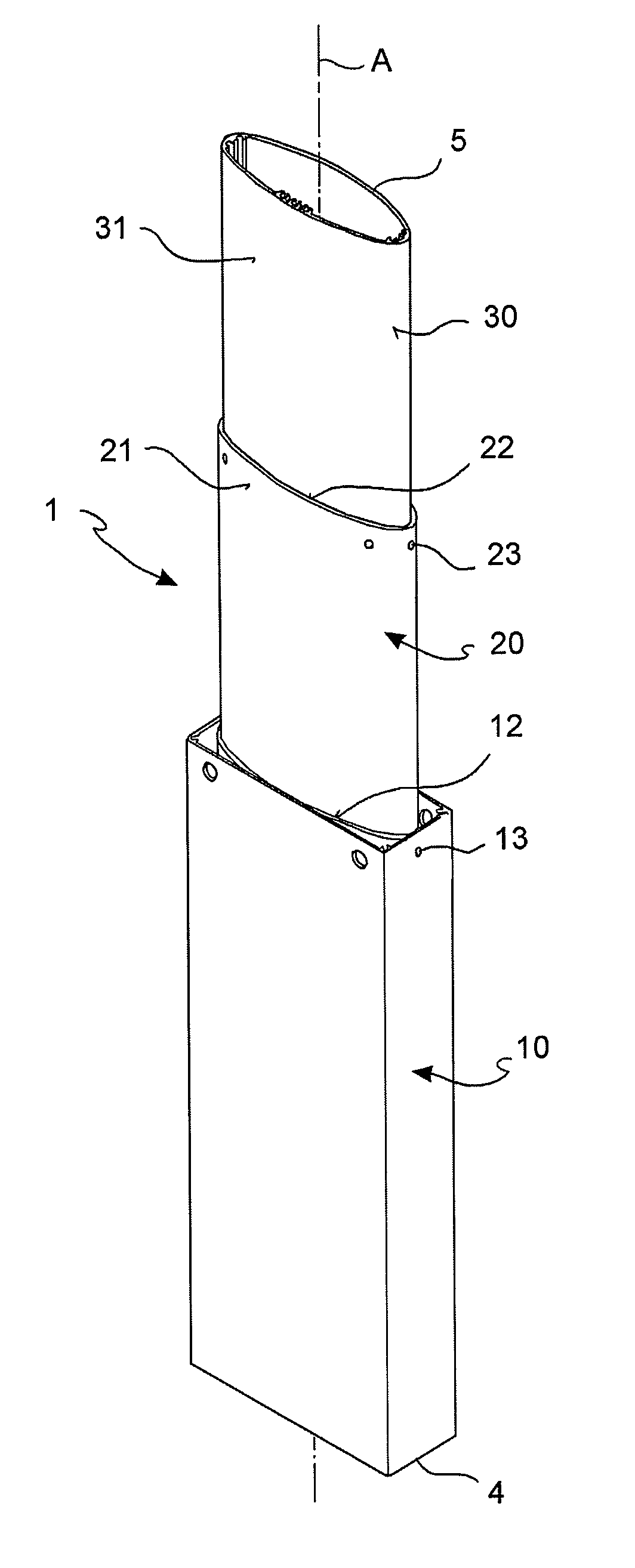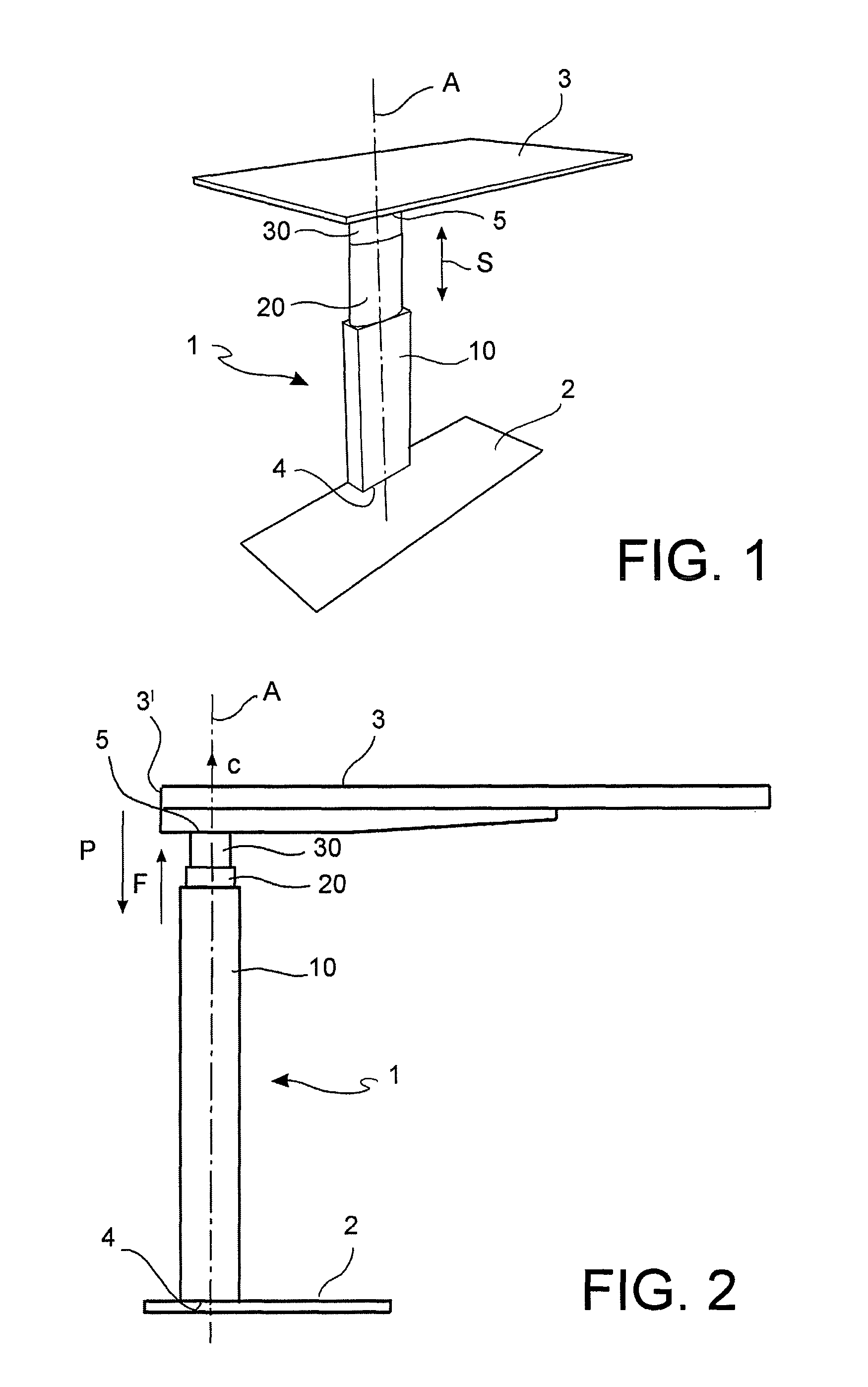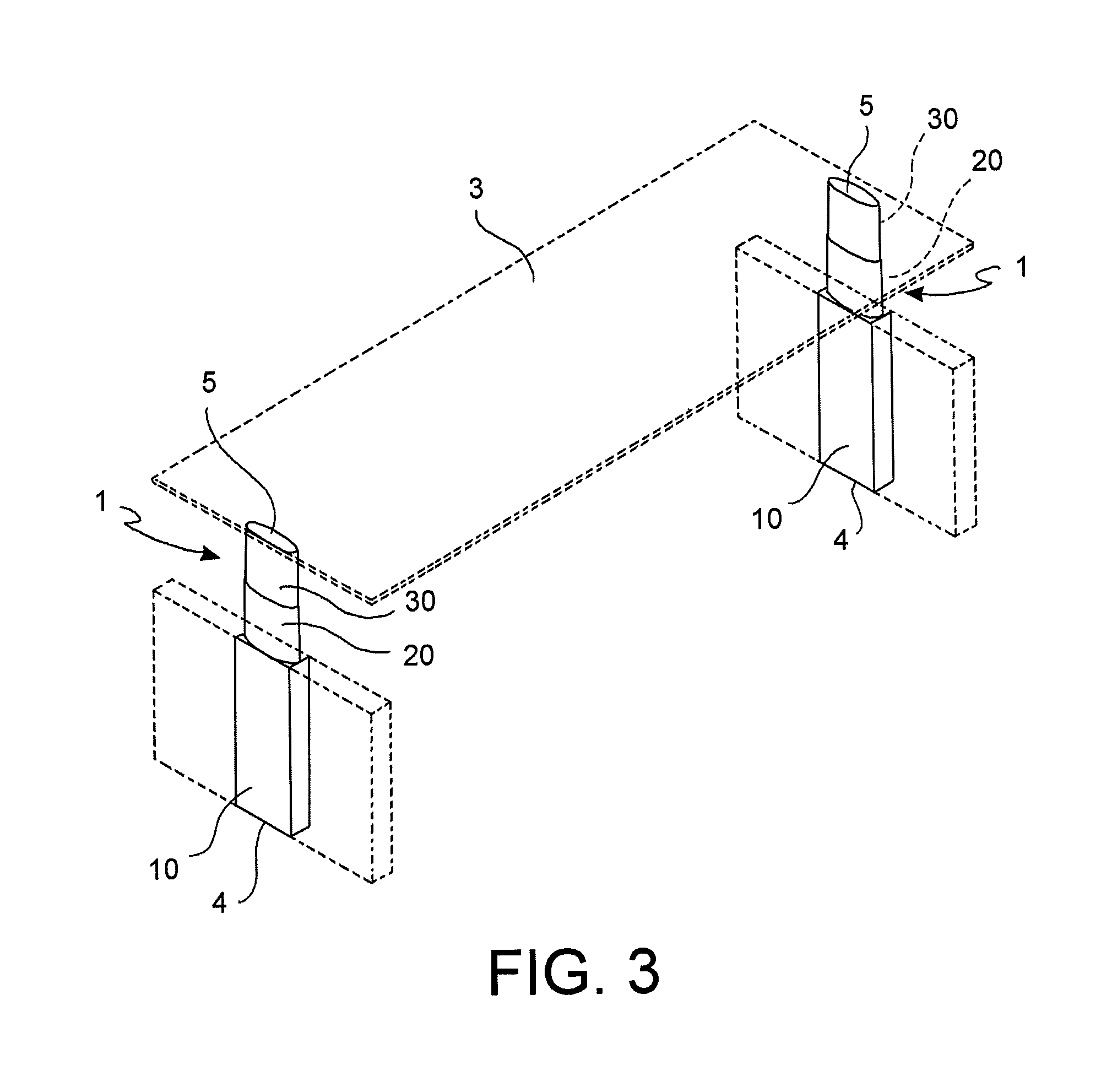Adjustable leg for a table
a technology of adjustable legs and legs, applied in the field of adjustable legs, can solve the problems of poor quality construction, complicated structural complexity, and difficulty in synchronizing the movement of such members with the relative movement of end members
- Summary
- Abstract
- Description
- Claims
- Application Information
AI Technical Summary
Benefits of technology
Problems solved by technology
Method used
Image
Examples
Embodiment Construction
[0059]With reference to the figures, an adjustable leg for supporting a top, for example, the work top, or support surface of a table, according to the invention, is globally denoted by reference numeral 1.
[0060]The adjustable leg 1 extends along an extension axis A and is adjustable along said extension axis A, between a retracted or lowered position, in which the leg has minimum length, and an extended or raised position, wherein the leg has maximum length.
[0061]In the present description, the term “longitudinal” means a direction parallel, or substantially parallel, to the extension axis A.
[0062]The adjustable leg 1 is, therefore, a telescopically extendable leg.
[0063]The adjustable leg 1 has a first end 4 and a second end 5, opposite the first end.
[0064]The first end 4 is suitable to be directed towards a floor, for example, resting directly on the floor, or suitable to be secured to a support base 2. Such base 2 may therefore be rested on or secured to a floor, or to a wall.
[00...
PUM
 Login to View More
Login to View More Abstract
Description
Claims
Application Information
 Login to View More
Login to View More - R&D
- Intellectual Property
- Life Sciences
- Materials
- Tech Scout
- Unparalleled Data Quality
- Higher Quality Content
- 60% Fewer Hallucinations
Browse by: Latest US Patents, China's latest patents, Technical Efficacy Thesaurus, Application Domain, Technology Topic, Popular Technical Reports.
© 2025 PatSnap. All rights reserved.Legal|Privacy policy|Modern Slavery Act Transparency Statement|Sitemap|About US| Contact US: help@patsnap.com



